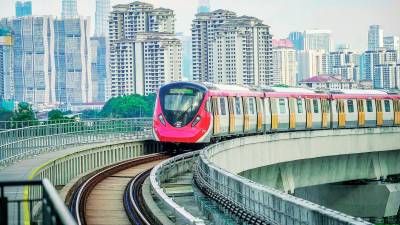AT a recent forum, I asked the audience: “How many of you would choose not to buy a car in the future, even if you could afford one?”
Half the room raised their hands. I looked at them and said, “You must be from Klang Valley”.
Because in Klang Valley, people have options. They can choose from three LRT lines, two MRT lines, a BRT service, KTM Komuter, the KLIA Express, a monorail, Rapid buses and even on-demand DRT vans.
But in towns like Nibong Tebal, Jitra or Kampar, life is a different story. Without a car or at least a motorcycle, basic daily routines like commuting to work, buying groceries or getting to school become nearly impossible.
It is easy to point fingers and say the government hasn’t invested enough in public transport outside major cities but that explanation is too simplistic.
Public transport investment isn’t one-size-fits-all; it depends on several key factors:
• Population density
In dense urban areas, a single train can move thousands of people within minutes but in small or dispersed towns, that same train may run half-empty. That is why the type of public transport must match the area’s density.
• Ridership
Public transport infrastructure is only valuable if people actually use it. Living near a station does not matter if most people still prefer to drive. Policymakers must study current usage and projected demand.
• Population growth
Expanding a transport system makes sense if an area is growing. But in areas where the population is stagnant or shrinking, such investments can be wasteful.
• Population policy
Density is not natural but shaped by urban planning. When governments build high-density housing, offices, schools and malls near LRT stations, ridership will increase. This is the principle behind transit-oriented development. But if planning prioritises highways and low-density suburbs, public transport use will decline.
• Development cost
Heavy rail systems like LRT or MRT cost billions. They are justified only in large, high-demand cities that are designed to be high-density and growing. In smaller towns, more flexible and cost-effective options, like buses or vans, are more realistic, though most people still prefer private vehicles.
• Time efficiency
Good public transport systems must move people quickly. In dense cities, an MRT line can serve thousands in a short time. In rural areas, slower and less frequent buses may not meet people’s needs. Slow or fragmented journeys discourage regular use.
• Private vehicle affordability
If cars and motorcycles are cheap and convenient, public transport will always struggle to attract riders. But when fuel, tolls or parking become expensive, more people will use public transport. When we consider all these factors together, the picture becomes clearer. Dense cities with pro-density policies and high private vehicle costs require segregated systems, such as MRT and LRT. In contrast, smaller, low-density, car-dependent regions that rely only on flexible systems risk remaining stuck in a cycle of commuting inefficiency. Ultimately, government and citizens must decide what kind of city do we want to build.
Do we pursue a transit-city model like Singapore or Hong Kong, where pro-density policies and high vehicle costs sustain high-efficiency, high-ridership systems? Or do we opt for a low-to-medium density model with cheap vehicle ownership, where even efficient transit systems struggle to achieve only moderate ridership?Or perhaps we continue with a high-density model with cheap vehicle ownership, like Kuala Lumpur, where efficient transit systems exist but still struggle to reach high ridership?
Simply put: Would we rather be stuck in traffic jams or in a crowded MRT? Public transport efficiency is not just about the system itself; it is about fitting the right system to the right place, at the right time, supported by the right policies. So, what kind of city do we want to build?
Comments: letters@thesundaily.com
